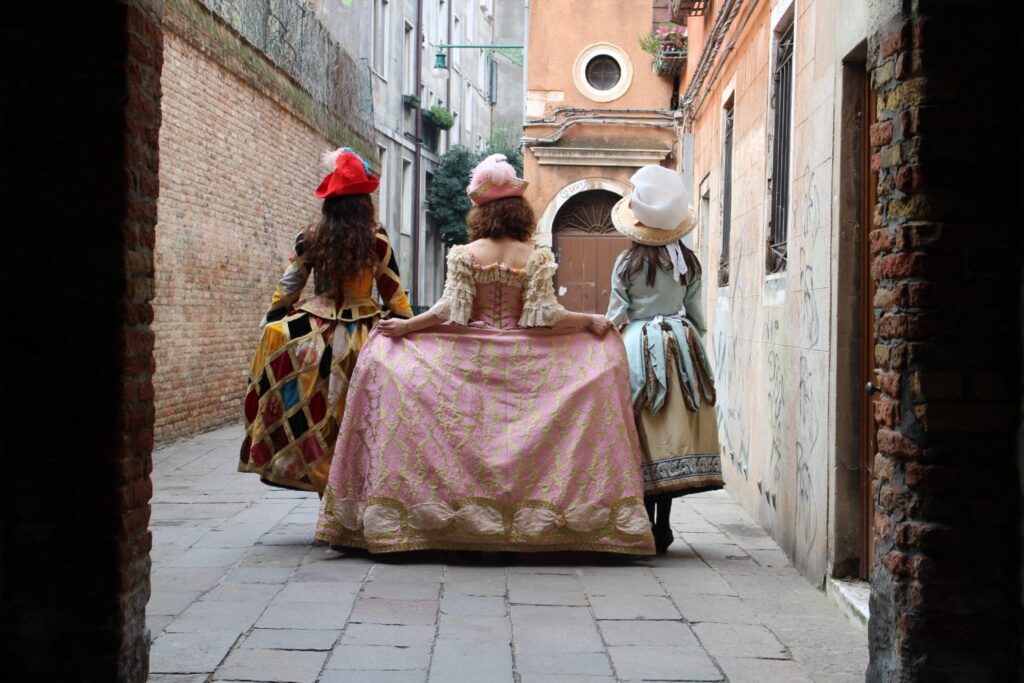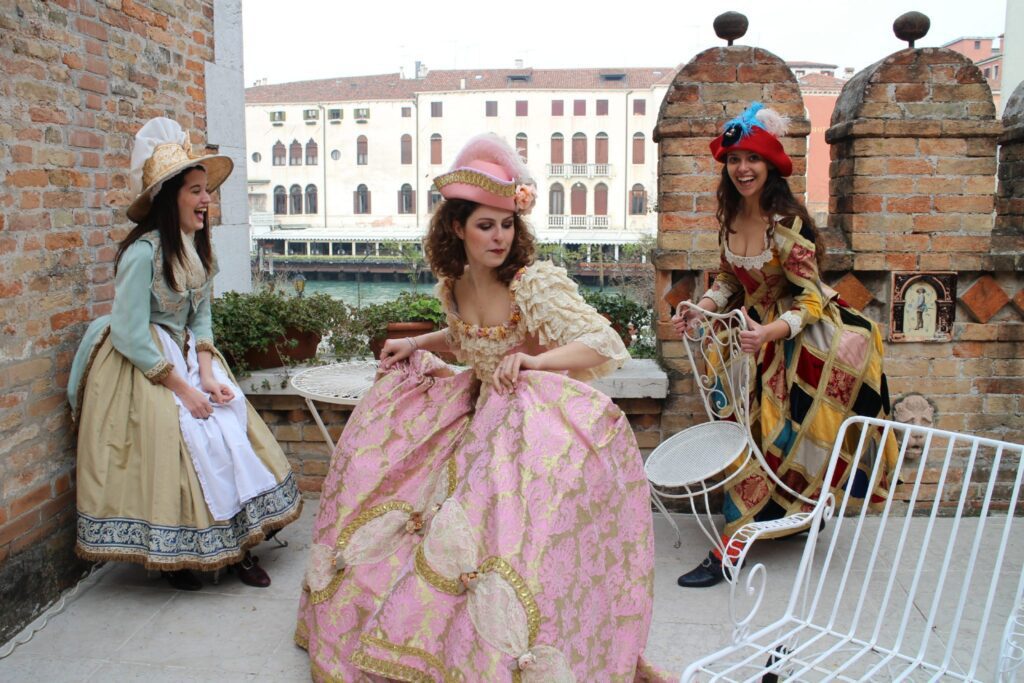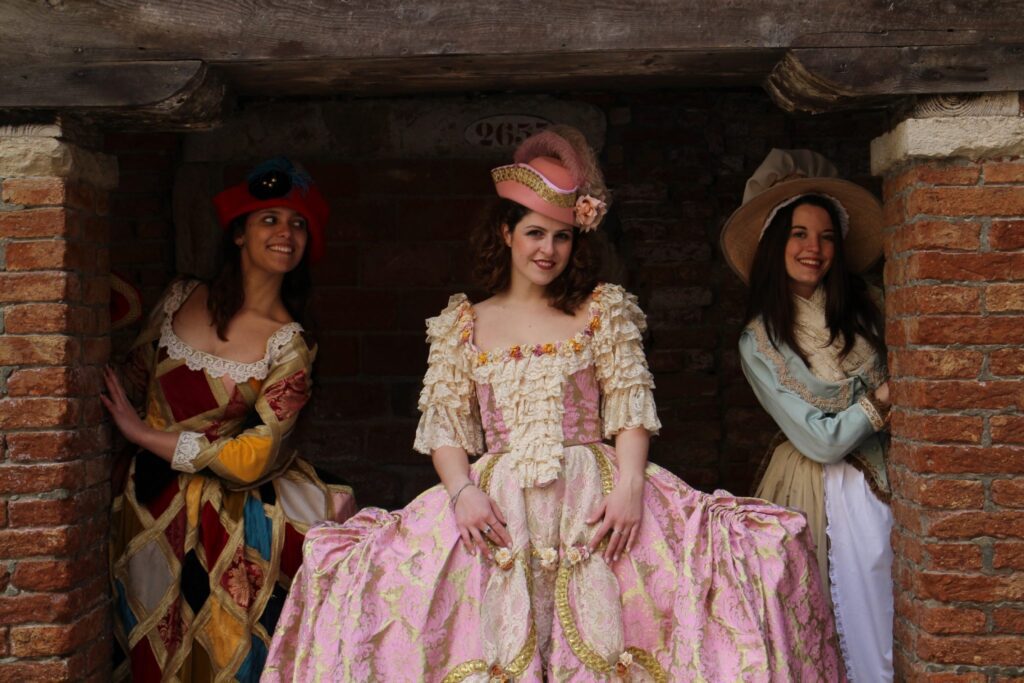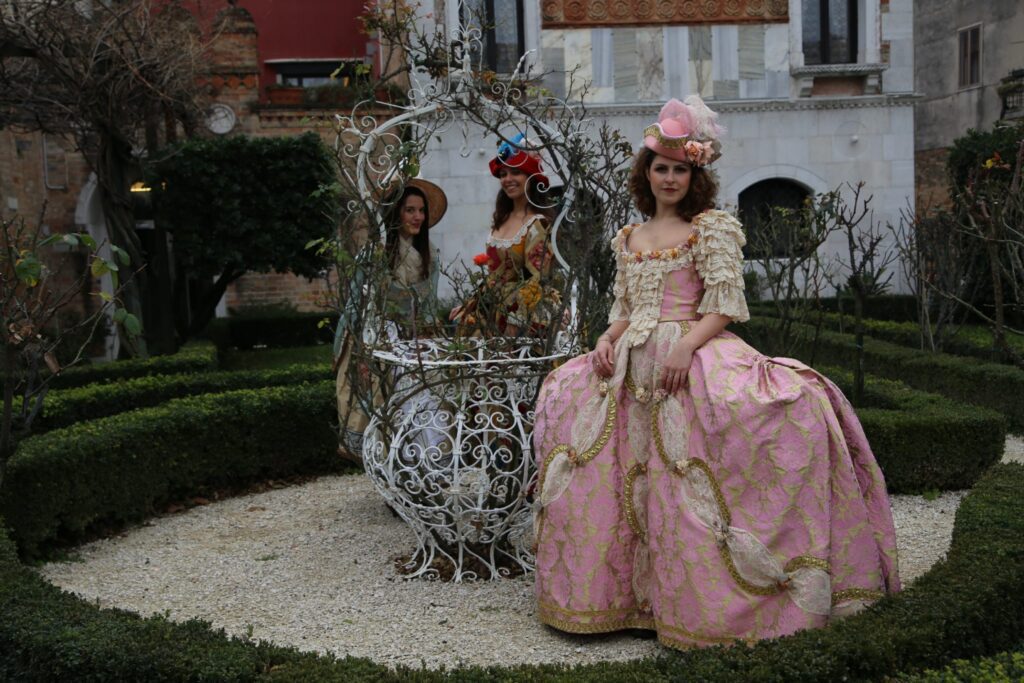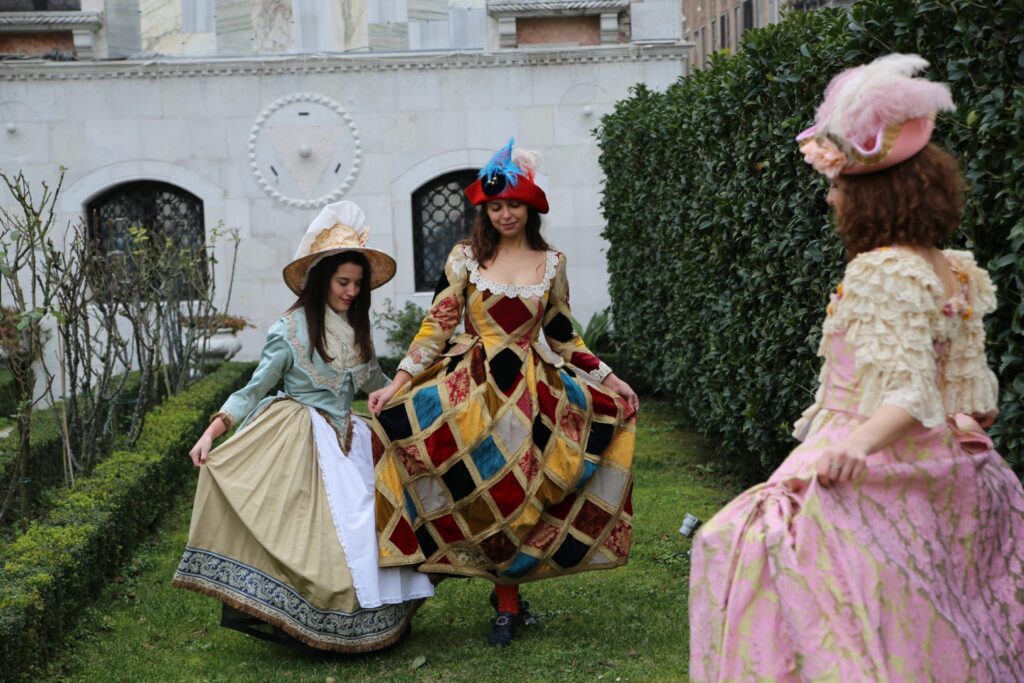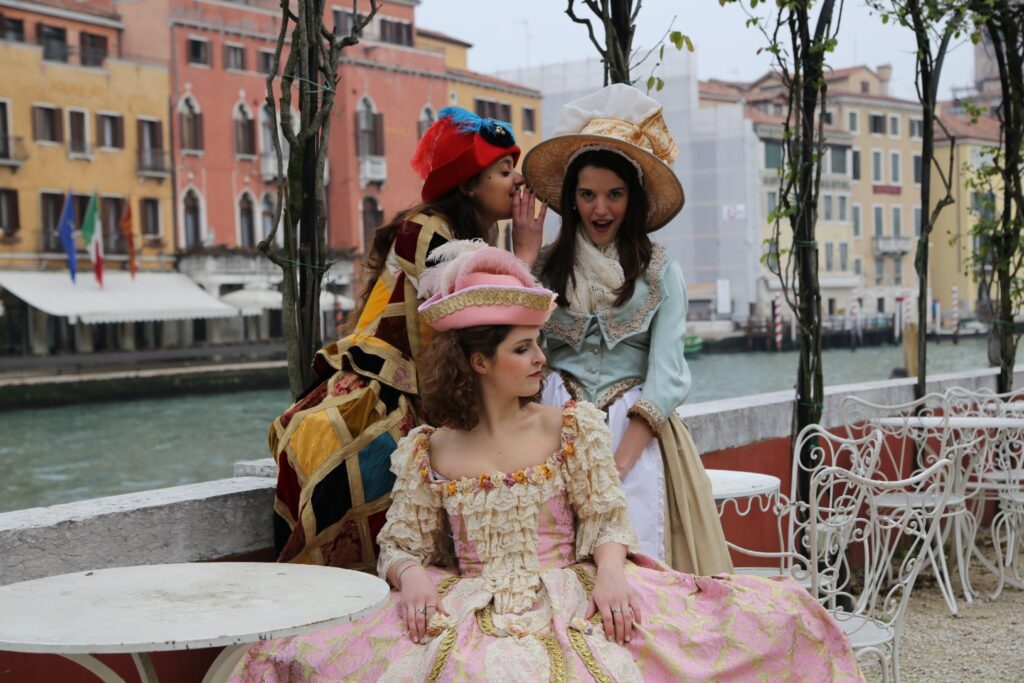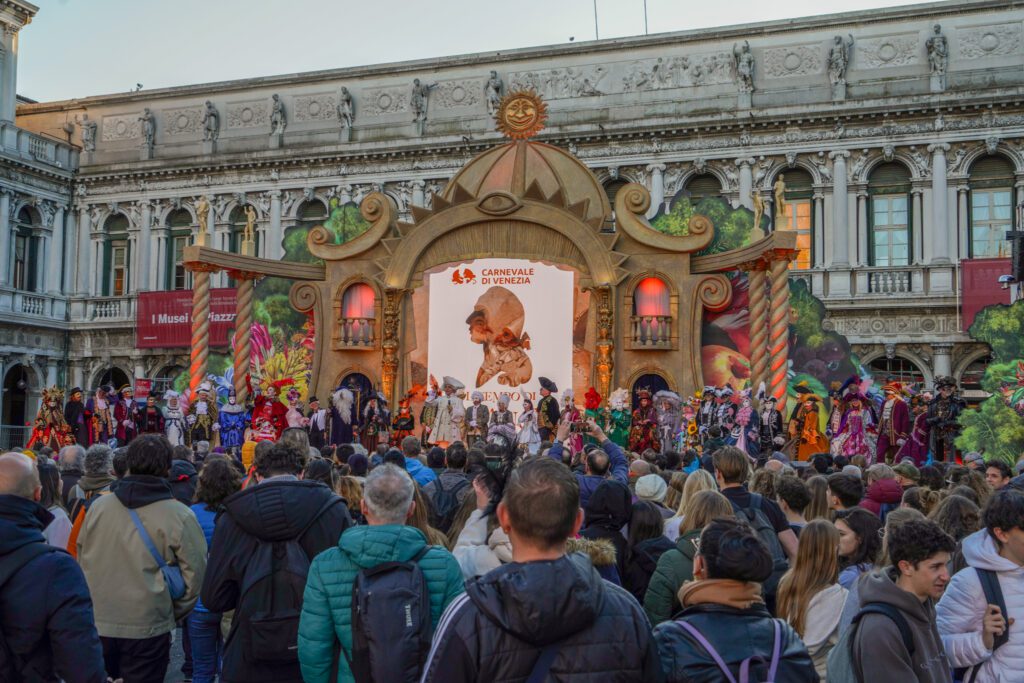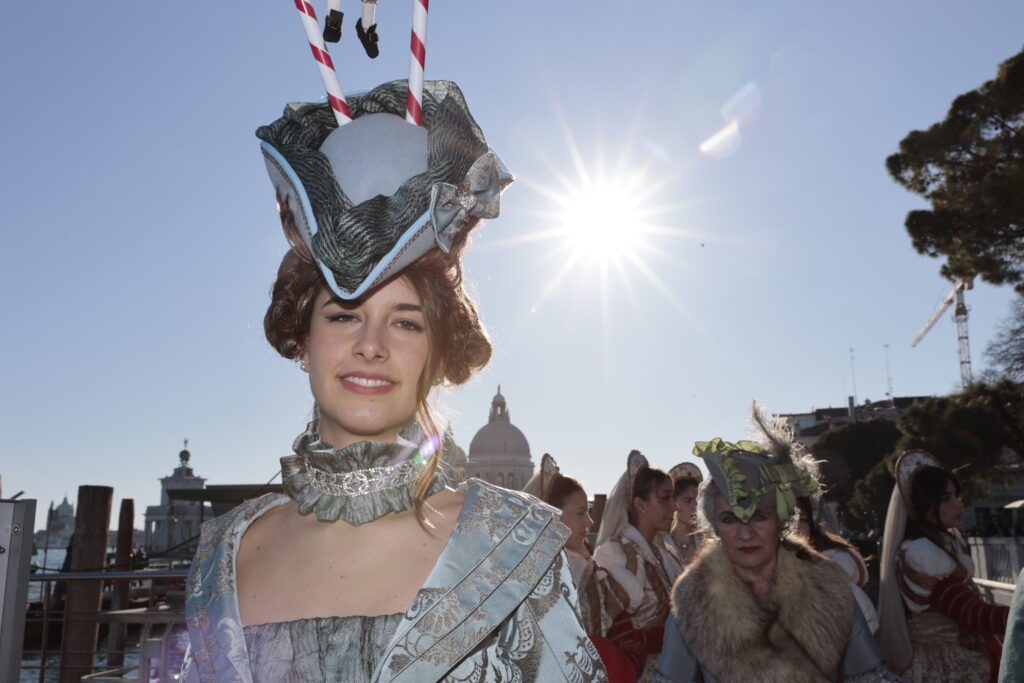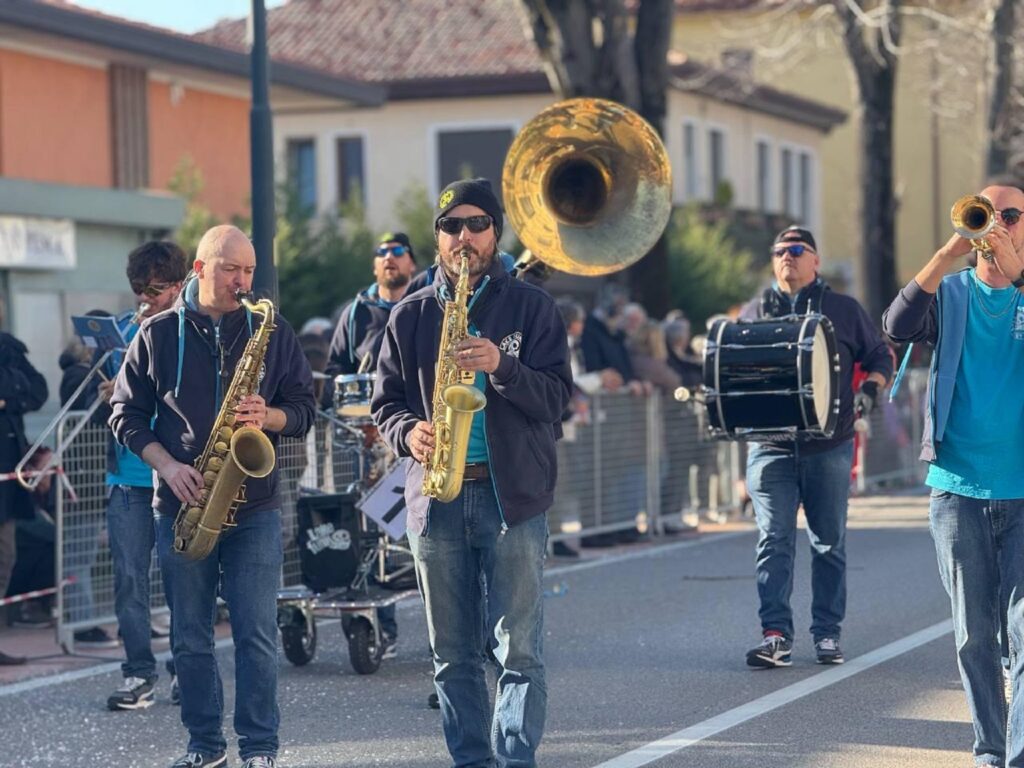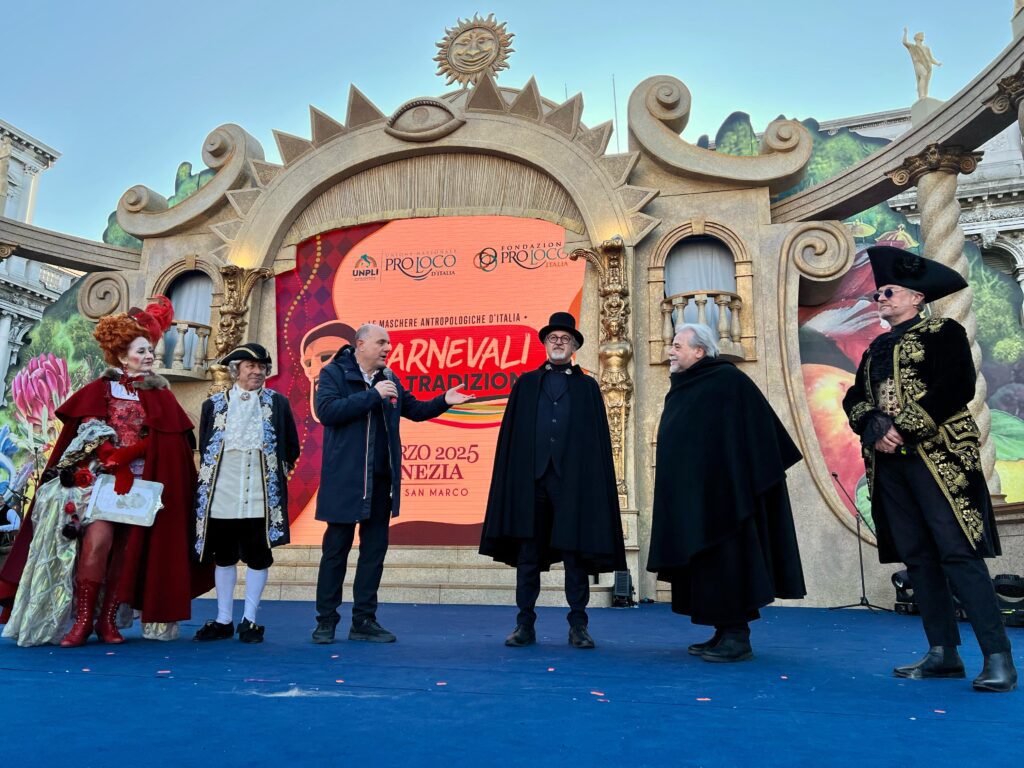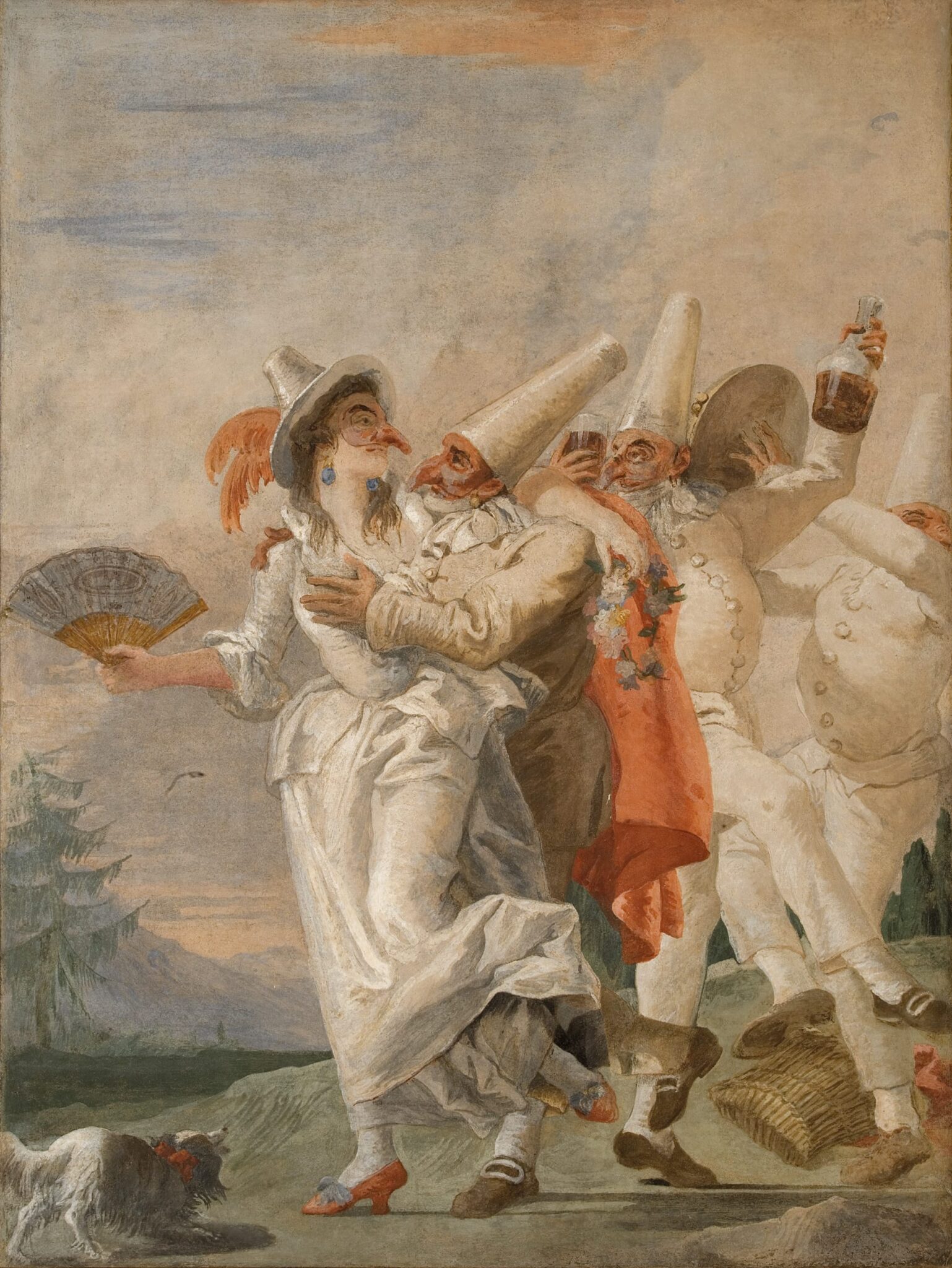Dressing up in Atelier: back to ‘700

There are many ways to enjoy Carnival, but dressing up is definitely the best one. After all, once a year it is licit… to show off!
Three girls from the Carnevale di Venezia Staff experienced it for us. They visited the Atelier Pietro Longhi and tried on some beautiful costumes. Thanks to Raffaele Dessì’s expertise, they rediscovered the pleasure of playing dress up.
The costumes
Our Valeria wore a beautiful pink dress, which is a French court model from second half of the 18th century. It is made in silk brocade and metal thread with handmade flowers in Chinese paper.
Andrea became a “female Harlequin”, wearing a Venetian model from the 18th century, made of more than 100 pieces of precious fabric sewn together. The sewing is hidden by golden trimmings. Roberta became “Colombina”, wearing a polonaise model from the late 18th century, made of “canneté” fabric and silk embroidered bands.
Then, Raffaele also told the girls some interesting facts about the history of costumes and Carnival.
Carnival and costumes
Throughout thousands of years of human evolution, when cultures overlapped each other, man has always tried to erase the memory of the previous dominations. The only celebration that has never ceased to exist is Carnival. Bullfighting events with masked figures fresco the halls of Knossos, the Greeks wrote comedies that were staged during the Carnival period and Plautus animated the theatres of the entire Roman Empire with his plays. Even the church that had always opposed pagan amusements, notwithstanding its strictest form, such as the Protestant and the Nordic Lutheran churches, allowed a period of the year during which it was licit to wear a disguise. The most isolated cultures continued to celebrate the end of winter with imaginary animals that were hunted by great heroes, and traces have even been found in the gelid Swiss territory, while the cities most open to fun and cultural exchanges have always transformed carnival into a period of entertainment in local places displaying their wealth and culture. Hence, it is of no coincidence that the most famous carnival in Europe is the carnival of Venice and that since the eighteenth-century it has offered entertainment for weeks, leaving all its visitors with unforgettable memories. Memories of shows and performances that have made those who have lived the carnival experience it as a protagonist. Everyone is encouraged to search for a character they wish to impersonate and in so doing they should dress and behave in the same way as much as possible. This is precisely where the grandeur of carnival lies: it is not a matter of disguising yourself for days, but for days you live the illusion of having achieved what you want … of being who you want to be. Although the type of amusement has changed from what it was back in the 1700s, where carnival was a way for the aristocrats to break the mould without having to respect the strict code of etiquette, and a way for the poor to dream of giving orders, of wearing a precious cloak and perhaps even of answering back to or making fun of their masters, the spirit of carnival has not changed.
Nowadays, we see super heroes who save entire cities, or men in period dress flaunting the luxury of the past, or ladies wearing dream clothes and jewellery without a care in the world. It doesn’t matter whether the jewels are real or whether the clothes are made from precious fabrics; what really matters is that everything looks perfect, like the character they want to interpret. This is why Carnival cannot but be linked to disguising; for a few days we all feel the need and have a right to believe that our dreams have come true. Venice, an entire city that masks or perhaps unmasks itself to reveal what it really is, behind the mask of everyday life that we all wear.
Valeria, Andrea and Roberta are grateful to Raffaele for this opportunity and for sharing his knowledge with them. Dressing up is always fun, but the quality and attention for details guaranteed by Atelier Pietro Longhi made it a unique experience.
